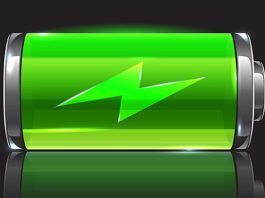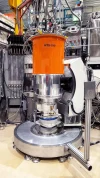University of Utah engineers have developed a new pyroelectrochemical cell that demonstrates its potential for Internet of Things applications.
Wirelessly connected devices are performing at an expanding variety, such as monitoring the condition of engines and machinery.
Systems known as the Internet of Things (IoT) have great potential for improving equipment efficiency and safety.
However, there are challenges in the way of IoT that block many potential applications. For example, powering the devices in situations where reliable sources are not practically available.
The team believes that a new type of battery called a pyroelectrochemical cell (PEC) could be one possible solution.
The device is developed and tested in the research labs of Roseanne Warren and Shad Roundy, both associate professors of mechanical engineering.
The work is published in the journal Energy & Environmental Science.
Advantages of the PEC
The device is charged by changing temperatures in the surrounding environment. In theory, the pyroelectrochemical cell could power sensors for IoT applications that otherwise would be impractical to recharge.
“It’s our idea for an integrated device that could harvest ambient thermal energy and convert it directly into stored electrochemical energy in the form of a supercapacitor or battery with applications for the Internet of Things and distributed sensors,” said Warren, the senior author on a new study that demonstrates a proof of concept.
“We’re talking very low levels of energy harvesting, but the ability to have sensors that can be distributed and not need to be recharged in the field is the main advantage,” she added.
“We explored the basic physics of it and found that it could generate a charge with an increase in temperature or a decrease in temperature.”
Why do solar cells not work in every scenario?
Although a solar cell can work well in some situations, in a lot of environments, you can run into two problems.
Roundy explained: “One is that it gets dirty over time. Solar cells have to be kept clean. So in these types of applications, they get dirty and their power degrades.
“And then there are a lot of applications where you just don’t have sunlight available.
“For example, we work on soil sensors that we put just under the top surface of the soil. You’re not going to get any sunlight.”
How does the PEC device work?
The pyroelectrochemical cell uses a pyroelectric composite material as the separator in an electrochemical cell.
The material is comprised of porous polyvinylidene fluoride (PVDF) and barium titanate nanoparticles.
The material’s electrical properties change as it is heated or cooled, decreasing or increasing the polarisation of the pyroelectric separator.
Changing temperatures create an electric field inside the cell, pushing ions around. This enables the cell to store energy.
Testing how the cell operates
The new study tested the team’s theory of how the pyroelectrochemical cell would operate.
“We had a predicted model of function that included what we called an ‘orientation effect’ in the paper,” said lead author Tim Kowalchik, a graduate student in Warren’s lab.
“If we reverse the orientation of the separator in the cell, it should drive ions the other way. This is a change we can make to the system that will show a different result that we can gather.”
As well as the orientation effect, the team looked at heating versus cooling effects.
“If you heat the thing one way, something should happen. If you cool it first, something should happen, and that should show up differently,” Kowalchik said.
“We did that with a process called amperometry. You put a voltage across it, hold that voltage constant, and measure the current. Your energy into the system is constant if nothing changes; if there is energy going into the system, the current changes.”
The cell did not respond as theorised.
Can the new cell work outside the lab?
Now, the team are examining whether the cell can work outside the lab by first undertaking circuit modelling to design a cell and optimise its function.
“Now we start to change different parameters,” Warren said. “How can we improve the energy harvesting and storage and the combination of the two? And then after that would be a real-world field demonstration.”
The cell could produce up to 100 microjoules per square centimetre from a single heating/cooling cycle. This is not a lot of energy, but enough for IoT purposes.
“You want to monitor the condition of your car, the condition of machines, the condition of plants and soil, and those kinds of things. Those types of sensors are generally going to have lower power than your smartwatch or your phone, which have a display, and they transmit a lot of data,” Roundy said.
“The sensors we’re talking about might just give periodic updates and they operate autonomously. They don’t have an interface or a screen.”









